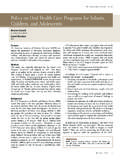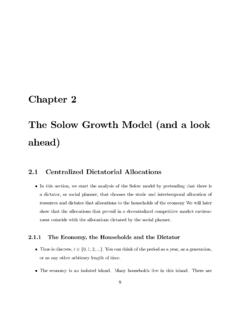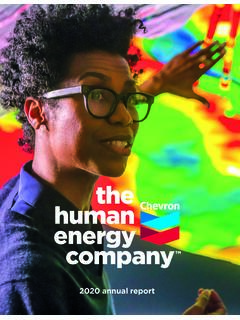Transcription of Hearing and Understanding Talking - AAPD
1 THE REFERENCE MANUAL OF PEDIATRIC DENTISTRY 591 THE RTFHEN CHILD SPEECH AND HEARINGS peech and Language MilestonesWhat should my child be able to do? Hearing and UnderstandingTalkingBirth-3 Months Startles at loud sounds. Quiets or smiles when you talk. Seems to recognize your voice. Quiets if Months Makes cooing sounds. Cries change for different needs. Smiles at Months Moves her eyes in the direction of sounds. Responds to changes in your tone of voice. Notices toys that make sounds. Pays attention to Months Coos and babbles when playing alone or with you. Makes speech-like babbling sounds, like pa, ba, and mi. Giggles and laughs. Makes sounds when happy or Months-1 Year Turns and looks in the direction of sounds. Looks when you point. Turn when you call her name.
2 Understands words for common items and people words like cup, truck, juice, and daddy. Starts to respond to simple words and phrases, like "No," "Come here," and "Want more?" Plays games with you, like peek-a-boo and pat-a-cake. Listens to songs and stories for a short Months-1 Year Babbles long strings of sounds, like mimi upup babababa. Uses sounds and gestures to get and keep attention. Points to objects and shows them to others. Uses gestures like waving bye, reaching for "up," and shaking his head no. Imitates different speech sounds. Says 1 or 2 words, like hi, dog, dada, mama, or uh-oh. This will happen around his first birthday, but sounds may not be to Two Years Points to a few body parts when you ask. Follows 1-part directions, like "Roll the ball" or Kiss the baby.
3 Responds to simple questions, like "Who's that?" or "Where's your shoe?" Listens to simple stories, songs, and rhymes. Points to pictures in a book when you name to Two Years Uses a lot of new words. Uses p, b, m, h, and w in words. Starts to name pictures in books. Asks questions, like "What's that?", "Who's that?", and "Where's kitty?" Puts 2 words together, like "more apple," "no bed," and "mommy" book."Two to Three Years Understands differences in meaning go-stop, big-little, and up-down. Follows 2-part directions, like Get the spoon and put it on the table . Understands new words to Three Years Has a word for almost everything. Talks about things that are not in the room. Uses k, g, f, t, d, and n in words. Uses words like in, on, and under.
4 Uses two- or three- words to talk about and ask for things. People who know your child can understand him. Asks "Why?" Puts 3 words together to talk about things. May repeat some words and with permission from How does your child hear and talk? ( ) Available from the website of the American Speech-Language Hearing Association: . All rights THE REFERENCE MANUAL OF PEDIATRIC DENTISTRYTHE RTFHEN CHILD SPEECH AND HEARINGR eprinted with permission from How does your child hear and talk? ( ) Available from the website of the American Speech-Language Hearing Association: . All rights should my child be able to do? Hearing and UnderstandingTalkingThree to Four Years Responds when you call from another room. Undertands words for some colors, like red, blue, and green. Understands words for some shapes, like circle and square.
5 Understands words for family, like brother, grandmother, and to Four Years Answers simple who, what, and where questions. Says rhyming words, like hat-cat. Uses pronouns, like I, you, me, we, and they. Uses some plural words, like toys, birds, and buses. Most people understand what your child says. Asks when and how questions. Puts 4 words together. May make some mistakes, like "I goed to school." Talks about what happened during the day. Uses about 4 sentences at a to Five Years Understands words for order, like first, next, and last. Understands words for time, like yesterday, today, and tomorrow. Follows longer directions, like Put your pajamas on, brush your teeth, and then pick out a book. Follows classroom directions, like Draw a circle on your paper around something you eat.
6 Hears and understands most of what she hears at home and in school. Four to Five Years Says all speech sounds in words. May make mistakes on sounds that are harder to say, like l, s, r, v, z, ch, sh, th. Responds to What did you say? Talks without repeating sounds or words most of the time. Names letters and numbers. Uses sentences that have more than 1 action word, like jump, play, and get. May make some mistakes, like Zach gots 2 video games, but I got one. Tells a short story. Keeps a conversation going. Talks in different ways, depending on the listener and place. Your child may use short sentences with younger children. He may talk louder outside than inside.














